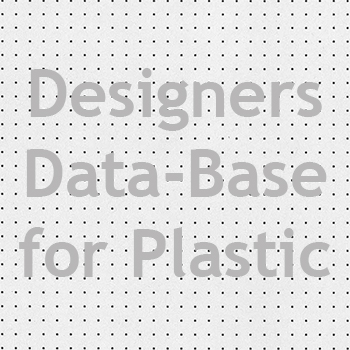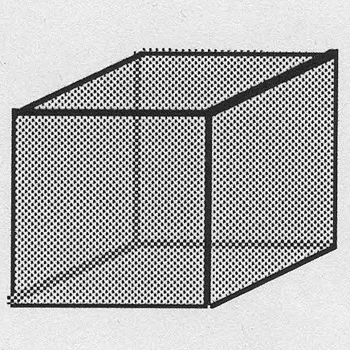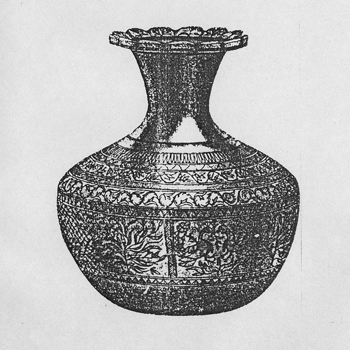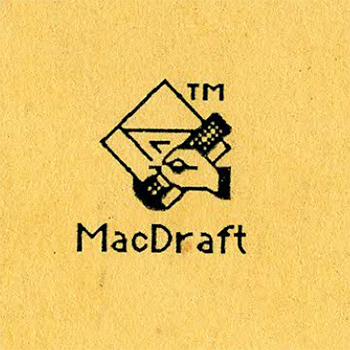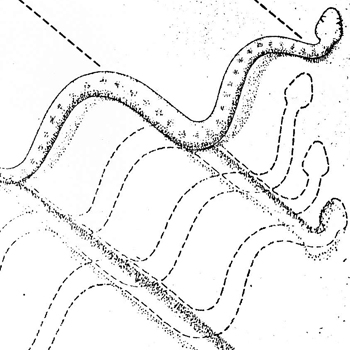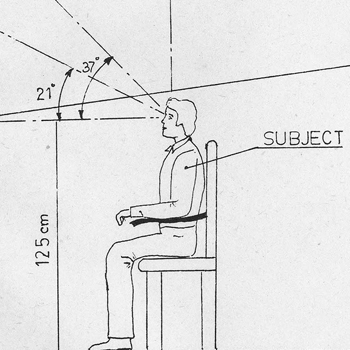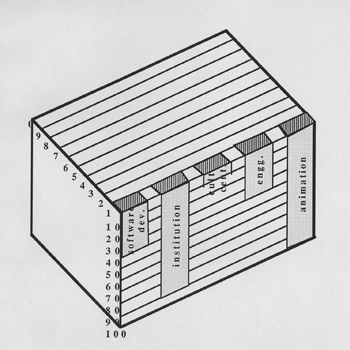Product Design
Batch 1986-1988
(9 items)
Product DesignBatch 1986-1988
(9 items)
(9 items)
by Anupam Shukla
The successful performance and profitable manufacture of any product depend on the material selected for production. The awesome growth of plastics has occurred over a very large range of load-bearing applications. Most of today’s plastic applications require high and sophisticated performance.
When we speak of design technology, we mean the prediction of performance, including all the characteristics and properties of a material that are essential to the process of material selection. To the designer or product engineer, a property is defined as one that permits calculation of part dimensions from stress analysis, and such properties are obviously the most desirable upon which to base material selection.
The need for systematic material selection has long been recognized. Product reliability is becoming more important.Plastics generally are substantially lower in strength and rigidity, especially at elevated temperatures. Consequently, they are designed close to their allowable limits. It has therefore become increasingly important to know these limits, both quantitatively and under actual environmental conditions.
by B. K. Chakravarthy
Although visual abilities are not democratically endowed, differences in inherited aptitude do not afford a rationale to deny visual education. Whatever the inheritance, the unrealized potential for visual development is great. Even the most visually gifted people can improve. Writes psychologist MacFarlane Smith, "Our current system of education actively discriminates against the student who is competent in spatial ability." Given a one-sided education in the 3 R’s (arithmetic, reading, and writing), most people possess a large unrealized potential for visualization. Almost everyone can learn to see more fully, to imagine more productively, and to express their visual ideas by drawing.
Visualization pervades all aspects of human activity, from the abstract to the theoretical to the mundane and everyday. An astronomer ponders over a mysterious cosmic event; a football coach considers a new strategy; a motorist manoeuvres his car along an unfamiliar pathway; all are thinking visually. You are having a dream and are thinking visually. Surgeons think visually to perform an operation; chemists construct molecular models; engineers design circuits, structures, and mechanisms; businessmen organise and schedule work; architects coordinate function with beauty; and carpenters and mechanics translate plans into things.
Now let us see what the dictionary meaning for "visualize" is; it says "to make perceptible to the mind or imagination, to form a mental image." Visual thinking is made up of a series of visualisations that result from a lot of mental operations.
The greatest advantage of visual thinking is that while we are hearing, smelling, or touching, we are also seeing, and the brain, which constantly seeks to simplify information for us, sets up visual clues along with other clues, enabling us to substitute vision for our other senses. The brain's most important function is to quickly sort or identify our experiences using the most efficient sensory mechanisms. Consider this example: "Look at the picture of the large, sculptural water fountain in the middle of the park." The reflections of the water as it spills and sprays over the edge of the fountain are our visual picture, but at the same time, we experience dampness, coolness, and the pattern of the falling drops. Even if this fountain is only a small part of the picture, our gaze is drawn to it because it visually represents all sensual pleasures. Therefore, visual images are powerful because they represent experiences using the other senses.
by Boban P. Varghese
Education has a crucial role to play in the development of the country. The early years of childhood are vitally important to an individual's development since it is the period during which the maximum development of intellectual abilities occurs. The current educational system does not encourage students' creative participation. This system is often alien and unrelated to a child's environment.
Design education at the school level can develop creative thinking, innovative ideas, and the problem-solving capacity of the student. This can be introduced into the schools through craft teaching, where students can learn the craft and the basic principles of design simultaneously.
Bamboo craft is a well-developed craft in our country, which is going through a very bad phase at present. This craft could be introduced into the school curriculum with the necessary changes to suit the academic environment. The idea behind this workbook is to guide the teachers in planning and conducting this course in the most successful way among children of different ages. This book contains the necessary information about bamboo, bamboo crafts, and the basic tools required for working with bamboo. It also deals with the methodology by which this course should be conducted in the schools, through craft-oriented and academic-subject-oriented exercises. These exercises could be modified depending on the local conditions, like the availability of materials and facilities at the school, the reactions of the students, etc.
by J. R. Mehta
We need a drafting table, a pencil, paper, and various tools for drawing conventionally, which is not only cumbersome but also time-consuming. Now, on the edge of computers, various computer-aided drafting programmes are available, like AutoCAD, RoboCAD, Mac Draft, Mac 3D, etc. Programs like AutoCAD and RoboCAD take a lot of time to learn. But as no workbook exists to teach engineering drawing using this program, an attempt is made to meet this need.
by K. Srinivas
The ways in which biological mechanisms function are quite intriguing. The incomplete and tentative character of our knowledge in biomechanics was expressed by the great British biologist James Gray, who said, "A bird flying" is one of nature’s great master pieces, and she guards very closely the secrets of her success.
The movement of fish and snakes assumes another dimension of complexity because, unlike other terrestrial animals, they are limbless and flexible. Because the parts of the snake’s body that exert motive forces are never as clearly defined as those in species with limbs, it is not obvious to a casual observer how such movement propels the animal forward. Such considerations make the movement of snakes a challenging task for simulation.
The objective of the project is to simulate snake movements and elucidate the way in which the snakes actually manipulate their structure and apply it to propel themselves forward. Second, it intends to use snakes as inspiration to see new relationships in materials and processes and to create objects that are pleasing to the human eye.
by Prashant Ahir
Human beings are exposed to the "real world," which is very complex. The large area of the human brain offers an almost unlimited capacity to store symbols for objects and events from the real world. It develops its own symbols for objects and events in the outside world. The organisation of these symbols is also necessary for effective retrieval.
What makes it significant to the field of design is the fact that this coding is based on sensory information, and for most objects, it is primarily the visual component of the information about the object that is used in processing. Understanding how the coding process exploits the semantic information available from the objects can help us learn to deal with semantic issues more effectively.
The term "sustainability" refers to the process of reducing the environmental impact of a product. The strategy used to construct categories and form concepts is uniquely different and can offer clues on how visual information can be controlled.
The categorization process demonstrates the superiority of human information processing over intelligent machines. It is advantageous not to differentiate the object from others as long as the behaviour and properties of the objects within the category remain predictable. So instead of categorising objects into a large number of finely discriminate and tight concepts, the mind automatically chooses the cognitively economical option of neglecting the infinite difference among the objects to achieve behaviorally and cognitively usable proportions. The categorization process treats nonidentical objects as equivalent when differences are irrelevant to the human response. Objects within a category appear to substantially share features that show a clear correlation. The fuzziness of the boundaries, an important characteristic of the human categorization process, does not create operational problems because the categories are not defined by their boundaries but by their centres.
by Sudheendra Dhulkhed
Human judgement is used to measure in many industrial and practical contexts.For example, in a heat treatment unit, the colour of the slab is the variable for judging the hardness temperature reached, even though technology is available to measure the temperature accurately.
In industry and everyday life, it is necessary to measure some value through human approximation even though no technology is available for doing so.
Even though there is technology available for measuring some variables, approximation is used. For example, in graphical and analogue displays, the value of some variable is represented by the length of a line without a scale beside it. The observer approximates the length of the line and estimates the value of the variable. Dial and pointer displays are often read by visually judging the angle of the pointer rather than accurately reading the scale mark they indicate. This happens when rapid reading is necessary. This also happens in the case of some watches where only four discrete points are marked on the dial.
In some process control rooms, dials and metres are located at a height. The operator has to visually judge and note readings, seeing only the pointers, as these metres will be at a height.
It is necessary to know the average deviation from the actual value or error in approximating the value of a variable under a given condition. This value will aid in providing the necessary amount of tolerance in machines, allowing accidents caused by human error to be avoided in all remote sensing plants, such as nuclear power plants and processing plants.
by Vani N Sheshadri
by Vinay M. Mundada
-Personally visiting IDC
-Through IDC news letter
Interaction between IDC and its alumni can help both in several ways:
-to get feedback on many important subjects.
-increased interaction with industries
-evaluating and revising the course work to meet the demands of the new environment.
-to make professionals known about IDC and its activities
-exchange of new trends and developments in design and its related fields
-to know the scope for a fresh designer as a freelancer
